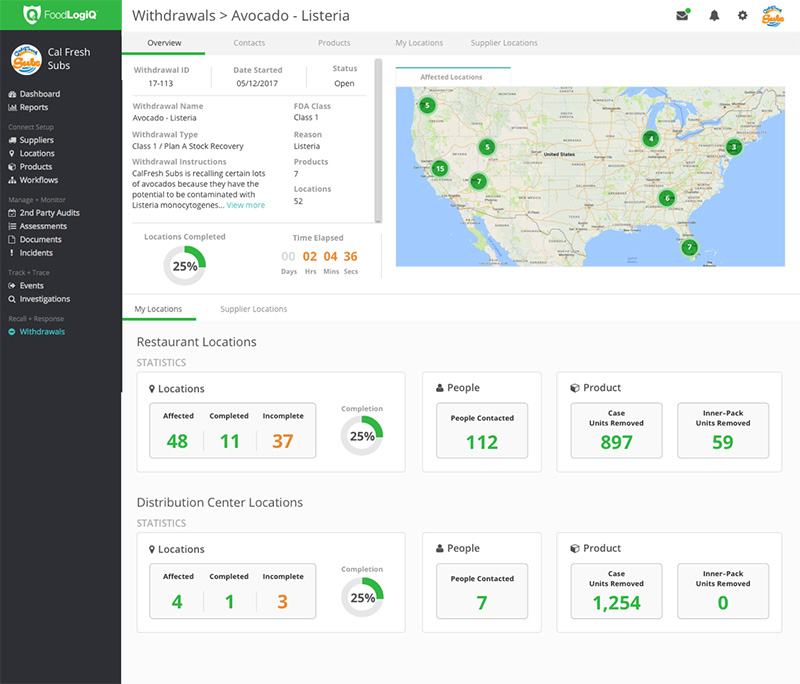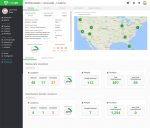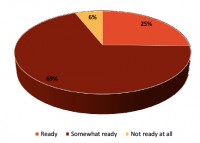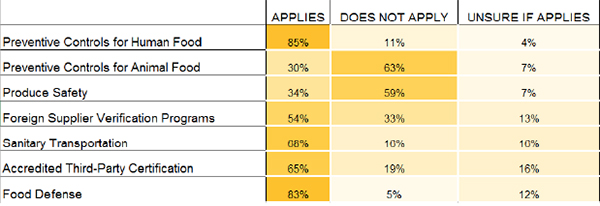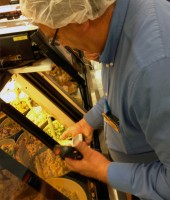Technology advancement continues to mature at a fairly predictable rate in terms of processing speed, size, battery life and perhaps most importantly, costs. Whereas 100 years ago the telephone, followed by the radio, were just being invented, today we are steadily marching toward a 100 gigabyte / second transfer rate. These conditions are what originally launched the Information Age and it now clears a path for 50 billion connected devices in the next three to five years.
To me, “Internet of Things” (IoT) is one of those catch-all phrases that encompasses so many different technologies, value propositions and solution sets. This means that when we discuss IoT, we can be talking about a device in your home or a device used to monitor the stability of a section of the Alaskan pipeline between Coldfoot and Deadhorse. Therefore, we should condense the topic at hand down to cold chain logistics and IoT.
The cold chain is an uninterrupted supply chain we control so temperature is maintained to ensure both quality and safety of food. This includes all segments of food production, transport, warehousing, distribution, handling, preparation and storage.
Environmental conditions are essential in both quality and safety for proper food logistics, and therefore this industry was among the first to proliferate IoT. It began 15 years ago in the “over the road” and “rail” transport space when companies began to use satellite and cellular technologies to track and monitor the status, well-being and health of temperature-controlled cargos. The real-time nature of these solutions and the cloud-based historical records were the foundation of IoT as we understand it today.
Whereas these earlier solutions focused on the segments of supply chain where risks are most high, today IoT technology is implemented from source to destination. Smart devices are showing up all over the supply chain. These independent devices can work independently or collectively to capture and even halt food contamination before it happens. Temperature is essential, but more and more food safety IoT will detect gases, along with other environmental conditions that can predict and accurately report the evidence of pathogens.
But what is driving the IoT adoption? How do these disparate technologies come together in a cohesive way to build solutions that are proficient and economical? And perhaps most importantly, what is next?
Why
Consumer demand for fresher, safer and responsibly sourced foods are driving much of the IoT adoption. More retailers are focusing on customer loyalty and trust as key metrics for success. So whether it is blueberries 12 months out of the year, or whole meal replacements such as a vegetarian lasagna, people want more than low cost; they= want transparency and quality. This demand drives behavior throughout the supply chain.
How
The technology required to make this happen is ubiquitous and indeed, fascinating. Starting with the sensor technology first, we are seeing more “things” that can detect. In addition, the intelligence embedded in the devices provides accurate performance while preserving battery life, by reporting on exceptions.
The delivery of information has improved with multi- modes using cellular, Wi-Fi, Bluetooth, RFID, and various other scan/read technologies. Wireless is everywhere.
We are also seeing the explosion of APIs in all IoT solution sets. API stands for “Application Programing Interface”. Web APIs are a framework that allows for future functionality within applications. APIs allow the building of HTTP services that are compatible with a broad range of clients (sensors, mobile devices and browsers). This framework sets a standard for how different components of software should interact with one another.
The development and advancement of cloud technology acts as the backbone of all IoT. These central repositories of data (which becomes information) virtually never go down, are endlessly scalable and elastic without which there would be no internet.
Lastly, we have mobility. Mobility can be wearable or a handheld. The app plays a critical role in the proliferation of IoT. Smart devices are essential to solutions when stakeholders are everywhere throughout the supply chain. The application to see real-time information and track progress lives in Google Play and iTunes stores. Mobility coupled with wireless allows for real-time alerting and alarming directly to responsible stakeholders.
What’s Next
I believe that we will begin to see more “Solutions of Solutions”: Systems created out of many different technologies that when brought together generate widespread value.
As an example, global sourcing coupled with sophisticated, informed consumers has yielded technologies such as IBM’s Blockchain, which is designed for a single version of truth about a product from source to origin. Similar to Bitcoin, this technology allows for a decentralized exchange of valuable information whereby all participants benefit in the sharing of data.
The largest U.S.-based retailers are investing millions of dollars in these traceability technologies, not just to protect their brands, but because consumers expect transparency, demand quality and seek sustainability. The laws of economics (supply and demand) dictate that those that source these foods, such as meats, fishes, fruits and vegetables, must then also invest in technologies that share data.
However, because the Blockchain concept is designed such that no one single entity controls enterprise-wide information, the entire supply chain becomes transparent, which yields trust that everyone owns access and visibility. Each source of data in the chain is interdependent upon other sources, therefore all are compelled to behave rationally and responsibly. At its foundation, Blockchain is a database of information from (n) sources whereby a decentralized structure yields shared values for all stakeholders.











